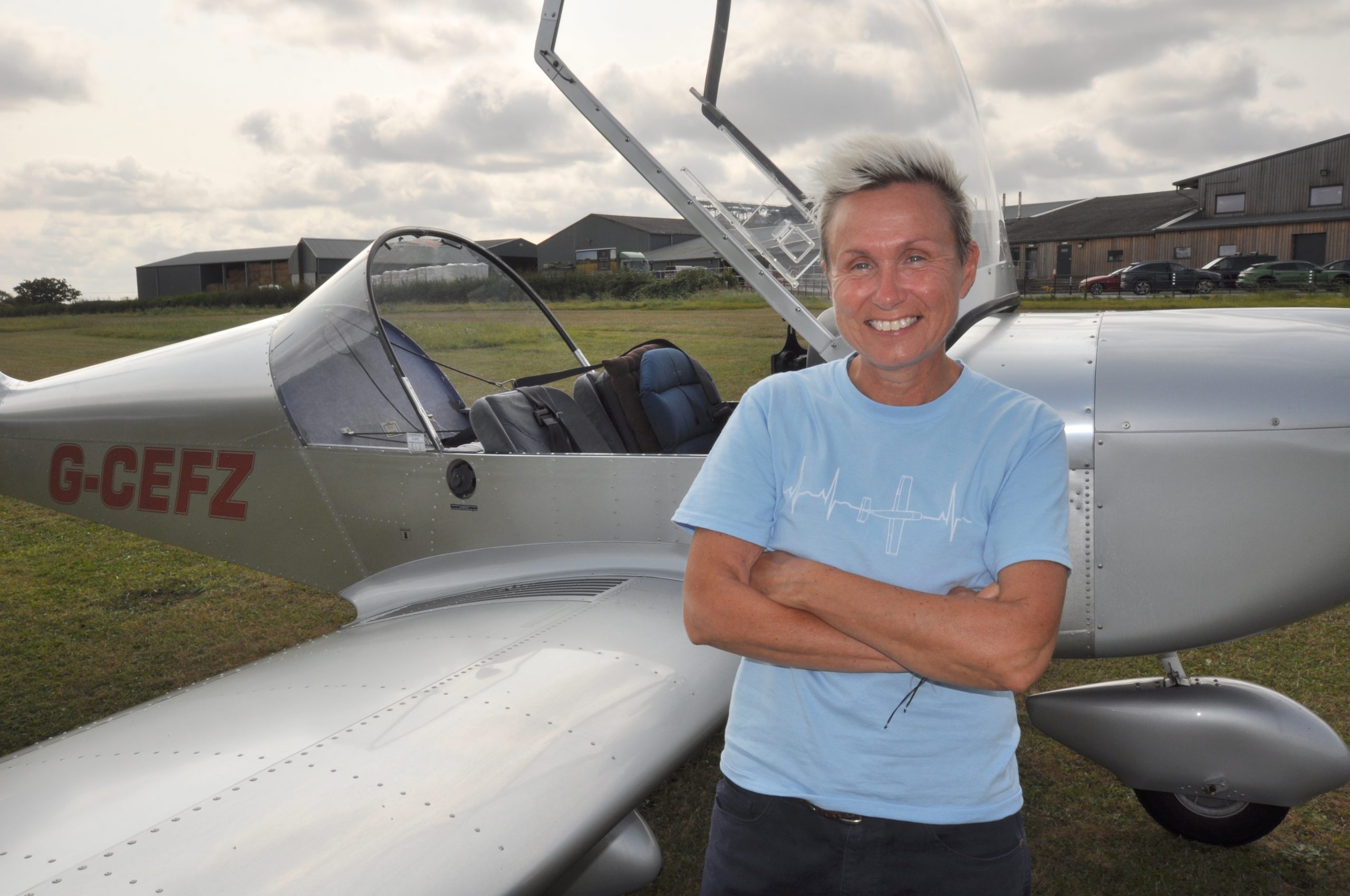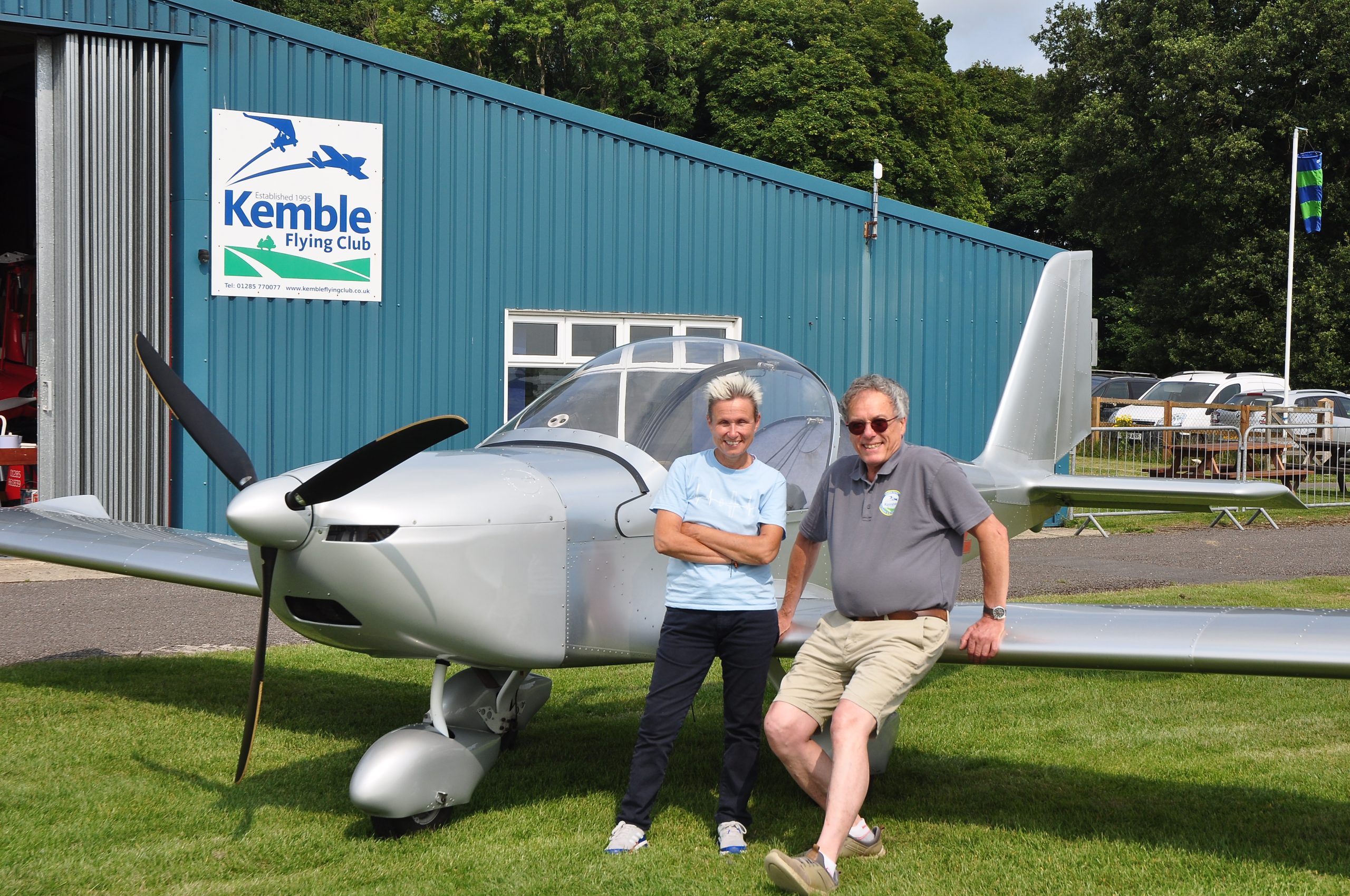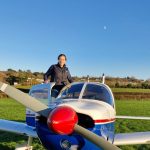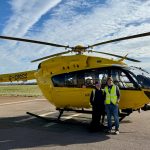My scholarship adventure
‘Always the bridesmaid, never the bride’: an expression that seemed to sum up my life journey to date. I always came close, but never actually won anything.
So when I attended the annual BWPA gathering at Christmas 2023, I really had no expectation that I would be one of the lucky recipients of the BWPA SkyDemon Flying Start Scholarship. So much so that when my name was called out, it took a while for me to absorb it. “That’s me!” I gasped, incredulous.
However, things were not going to be straightforward. When I excitedly returned to flying during a brief weather window in January, my instructor explained that he was retiring in a few weeks and that there was now nobody to replace him. What was I going to do now?
It had to be a Eurostar
This situation was a problem for me, and not just because of location and availability. I had ‘fallen in love’ with flying the Eurostar and had become used to the cockpit layout and controls. I really didn’t want to change aeroplanes at this stage in my learning, which was around nine hours.
The reason for this is that my cognitive ability is not great. As a child, I struggled to catch a ball and had to work hard on my reflexes and coordination to overcome that. Later on in life, I would get mixed up with my left and right when learning to paraglide. Again, I had to work on that, and eventually these things became automatic. I am also left-handed, which, in a right-handed world, means you always have to adapt and find a different way to do things.
The Eurostar is a left-hand stick, with the flaps in a ‘handbrake’ location, so I found the layout easy to remember and navigate. I really didn’t want to start all over again on a Nynja or C42, as the stick is in the centre, so it is a right-hand control and the trim is in the roof. The thought of this really bothered me.
I found some other schools with availability close to where I live, but they taught in C42s and Nynjas. They advised me that both these aeroplanes were more stable and had more crosswind capacity, but I was determined to continue with a Eurostar.
Evening flying: the way forward?
For months the wind and rain conspired to make even the thought of a flight impossible. But I did manage to get some sunset flights, as a passenger with my flying buddy Marc, and this gave me an idea. Evening flights would be so much more calm and stable, but nowhere within a couple of hours’ radius did lessons after 16:00. It was time to rethink, research and re-strategise.
I consulted Google Maps and created a spreadsheet of all the flying schools in the UK. I then filtered those schools by grass/hard runway and then by aircraft. I came up with three matches, but they were all a good distance away – more than two hours’ driving on a good day.
One of the schools on the list was at Kemble. I know this area very well, as we holiday near Devizes every Easter, and I had often driven past Kemble when driving the ‘scenic’ route down the Fosse Way. It was really a bit too far to travel for one session, but I called them anyway.
David Young, the owner of Kemble Flying Club, answered my call and I explained my position and flying to date. He was sure he could help, explaining that Sundays and Mondays were quiet at the airfield and ideal days to learn. He wasn’t doing a lot of teaching at weekends anymore, but generously offered to teach me to tie in with my availability and traveling. He suggested that we could do early morning and early evening flights, to get the most out of the sessions and consolidate my learning.
First flight with a new instructor
It was early evening on my first flight with David (Dy), and as we climbed above the clouds, the River Severn was twinkling in the sunlight. We saw a ‘Pilot’s Glory’ – our shadow reflected on the clouds – as I practised turns and climbs. It was magical – such a beautiful vista. I knew that I had made the right decision.
I flew twice a day on long weekends, with an intensive briefing beforehand, learning how to do a thorough daily inspection of the aircraft beforehand and following each flight with an extensive debrief. Dy typed notes about my performance directly into my account training records, which made a huge difference not just to my learning, but to my confidence, understanding and ability.
I’ve now clocked up 18 flights from Kemble over three long weekends, and my flying has improved dramatically. I can land, I can take off, I can fly circuits and ‘touch and gos’. I’ve even flown out to a farm strip, where I landed and took off again for my first nav lesson. With each flight, my confidence has grown, my understanding has improved and my reactions and muscle memory are faster.
“What a place to learn to fly”
I am lucky to have found an instructor with so much experience and knowledge. Dy learned with Gerry Breen in the early days of microlighting, and he also has a little paragliding and hang gliding experience, as well as a light aircraft licence. He is patient, kind and funny, and so generous with his time, knowledge and experience. I could not have wished for a better instructor, location and club. Everyone at Kemble has been so friendly and supportive, even inviting me to stay for their club barbecue – which turned out to be hand-cooked pizzas. What a place to learn to fly!
I’ve now used my scholarship funds, but I intend to stay with Kemble and continue with the long weekends, as that works better for me than long gaps in between.
The planets have now truly aligned: I fly the Eurostar, in a beautiful location, with a great instructor – and on weekends, so my head is not spinning from work stuff.
Sometimes, you have to change your game plan, problem solve and summon all your tenacity, looking at what is really important to you. For me it was the aeroplane, instruction and availability, and I’m just lucky that the location is such an amazing bonus.
Bev Reardon











